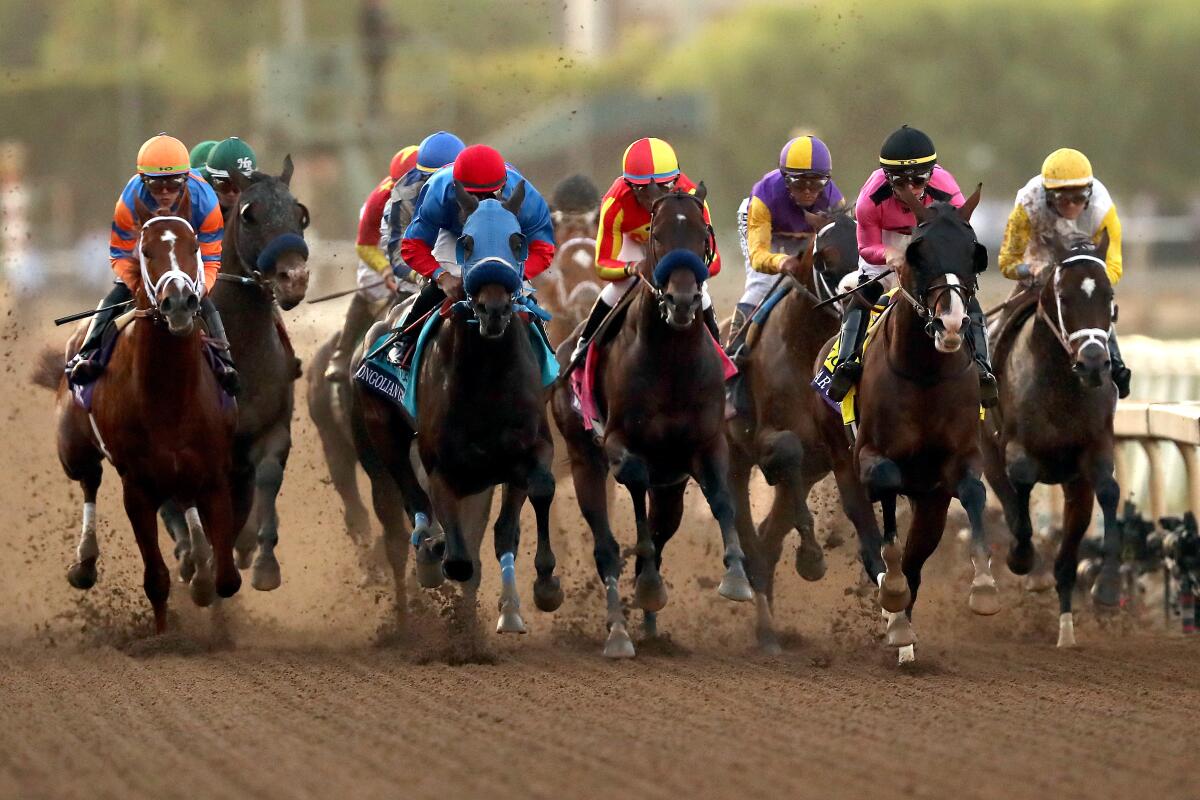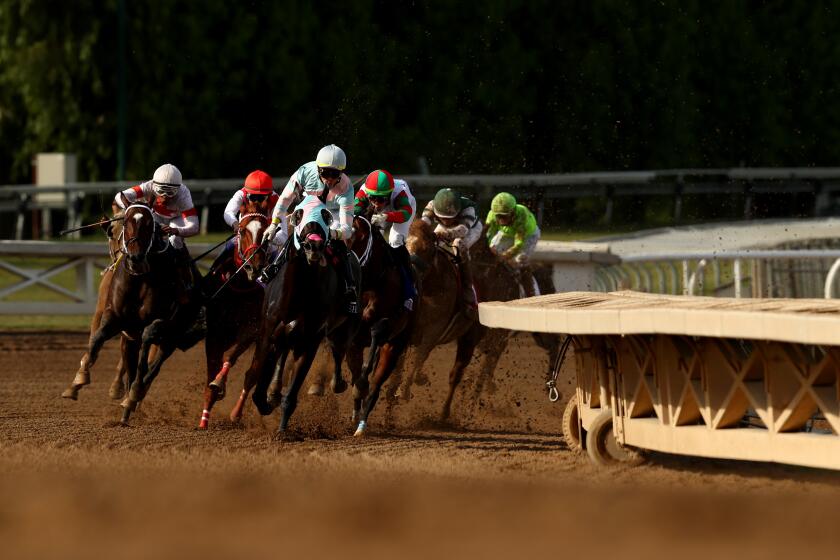A new horse racing safety coalition is formed in hopes of regaining public confidence

- Share via
Horse racing, in the midst of an equine fatality crisis, announced Tuesday the formation of the Thoroughbred Safety Coalition, in the hopes of regaining public confidence in the sport.
The group includes the three main racing organizations — Stronach Group, Churchill Downs Inc. and the New York Racing Assn. — plus Breeders’ Cup Limited, Del Mar and Keeneland. Stronach Group, which owns Santa Anita Park and Golden Gate Fields in California, didn’t join the group until Monday.
But don’t expect changes in California. Dr. Rick Arthur, equine medical director for the California Horse Racing Board, said “Essentially, all [the measures introduced] are in place or in the regulatory pipeline.”
Perhaps, the biggest accomplishment was to get the three main groups on the same page. Fights over Advance Deposit Wagering (ADW) revenue have often put the three groups at odds or in competition with one another.
“We want the sport to live for generations to come, and that is only possible with all of us working together to ensure that the safety and well-being of our athletes is our top priority,” said Drew Fleming, the new chief executive of the Breeders’ Cup.
The coalition represents groups that conduct 85% of the graded stakes races in the country.
Madeline Auerbach quits the California Horse Racing Board amid calls by Gov. Gavin Newsom for more oversight and less conflict of interest.
The three major groups and other tracks came together earlier in the year and introduced a plan under which next year 2-year-olds will not be allowed to race with Lasix, which is used to treat exercise induced pulmonary hemorrhaging, or bleeding from the lungs. The following year, horses running in stakes races, including the Triple Crown, will not be allowed to race with the drug. However, in nonstakes races, horses can be on it.
The TSC broke down reforms into three categories: medical, operational and organizational.
The medical changes increase the withdrawal time for nonsteroidal anti-inflamatory drugs (to 48 hours) and for corticosteroids (14 days). It also banned the use of bisphosphonates, drugs that can alter the bone structure in younger horses, for horses in training or racing. A violation would lead to a year on the veterinarian’s list.
The operational protocols include a “voided claim” rule, out-of-competition testing and a consistent riding crop rule. On Thursday, the CHRB will discuss a proposed rule that would severely restrict the use of the riding crop or whip.
Organizational rules are mostly about veterinarian records following every horse, data collection and safety committees.
Southern California tracks have instituted significant safety reforms, many of them part of the group’s protocols, yet horses keep dying. In the recent Santa Anita meeting there were seven fatalities both racing and training, including Mongolian Groom in the $6-million Breeders’ Cup Classic. Last year, before the protocols, there were four fatalities. Del Mar, after no racing fatalities in its seven-week summer season, has had three racing deaths and one in training in the first two weeks of its fall meeting.
More to Read
Go beyond the scoreboard
Get the latest on L.A.'s teams in the daily Sports Report newsletter.
You may occasionally receive promotional content from the Los Angeles Times.












